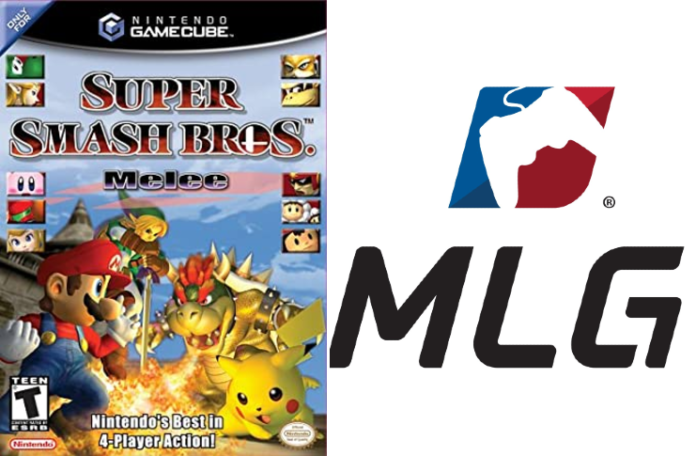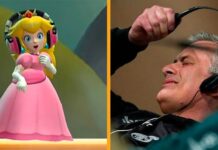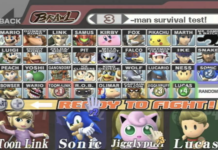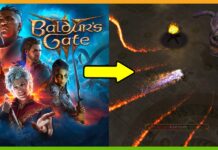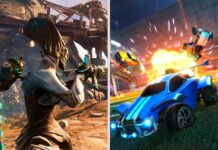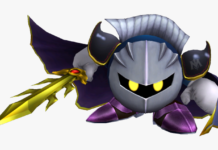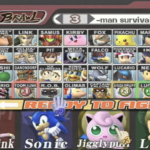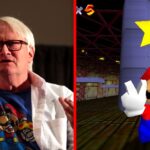In the mid-2000’s, Major League Gaming was one of the premier organisations trying to host high-level video game competitions to make esports a legitimate career move. To get a game featured on the MLG pro circuit was a great honor, and a chance for that game to develop into a large and respected competitive game.
Super Smash Bros. began its association with MLG in 2004, when Super Smash Bros. Melee was added to the circuit. The history behind Smash and MLG has its ups and downs, but there’s no denying that MLG has a pivotal influence in the growth and legacy of competitive Super Smash Bros.
MLG: The Beginnings
The focus around early MLG was console gaming; Halo was considered the flagship title of the pro circuit, and within a couple years other games were added, including Super Smash Bros. Melee in 2004.
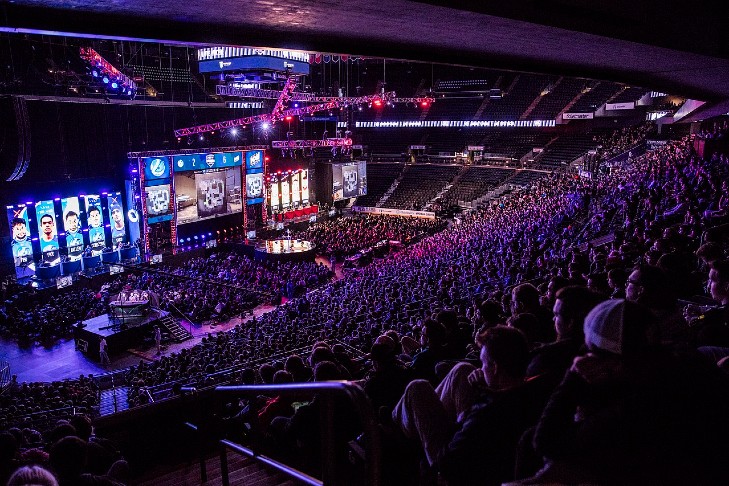
Part of the appeal in something like MLG was the prize money. Most video game tournaments up to this point were entirely grassroots, with the prize pot being directly funded by the competitors. MLG offered thousands of dollars in prize money for their respective titles, and the potential to win cash and glory generated considerable hype amongst the communities of the featured games.
The first Super Smash Bros. Melee event for MLG was MLG Chicago 2004 in June 2004. The winner was Ken Hoang, who would go on to become a two-time world champion for MLG.
Tournaments for the first couple years of MLG would often feature notable American talent such as Ken, Isai and Azen, as well as top international talent such as Captain Jack from Japan. With few exceptions, Ken won every single MLG tournament in 2004 and 2005, while his doubles venture with Isai would win every teams event they entered.
Of course, when one talks about Smash and MLG, it’s the 2006 pro circuit that they talk about. And this is where Melee would really begin to flourish as a competitive game.
Melee At MLG 2006
The 2006 pro circuit would be a crucial time in the growth of competitive Melee. It would see new talent rise up and challenge the old guard, Melee’s first appearance on an esports mainstage, and a massive jump in the metagame.
Between late April and late November 2006, there were seven MLG pro circuit events for Melee. The opening event in New York featured one of the biggest upsets in Melee history when PC Chris, a relatively unknown Falco player from New York, defeated Ken to win the tournament. The third match of the finals is one of the most viewed Melee matches ever.
PC Chris was the first in a new wave of top Melee players who challenged the established pros. Others who rose up during this time included Mew2King and KoreanDJ. The threat that these rising stars posed to the Melee hierarchy forced the old guard to either adapt or move out of the way.
This was part of why 2006 Melee was so electric; all of the top MLG players were constantly pushing the meta to try and get the edge on their opponents. More than ever, new technology and tactics were being developed and introduced.
The classic example of this is MLG Dallas, where PC Chris and Ken would rematch. Ken had hit the lab after his defeat to PC Chris, and when they faced off again in Dallas, Ken introduced an unorthodox approach: he would spam Marth’s counter, a traditionally frowned upon move:
This adaption from Ken completely turned the table, and would force PC Chris to change his gameplan in turn. These kinds of innovations were a constant throughout the 2006 pro circuit, and laid the groundwork for the highly technical and optimized approach that continues to this day.
Perhaps there was no more hype-filled moment in the 2006 circuit than MLG Anaheim. It would feature the Melee finals on the MLG mainstage, with a large crowd cheering on the finalists in a preview of the modern esports experience.
It’s worth noting that part of the reason Melee had a hard time getting on the mainstage was its constant battle with Nintendo; Nintendo has always been a rocky partner to work with when it comes to hosting tournaments and streaming Melee. As a result of this difficulty, as well as the fact that Melee was always a side title to something like Halo, MLG finals weren’t featured on the mainstage.
But at MLG Anaheim, Melee was featured in all its glory, and the finals set is a precursor to the feeling surrounding modern Melee.
The End Of Melee At MLG
The second half of the 2006 MLG pro circuit would see the new guard really put forth a challenge; while Azen would win MLG Orlando and MLG New York Playoffs, KoreanDJ and Mew2King would routinely place high, knocking out players such as Ken and Isai.
The finals in Las Vegas would come down to a showdown between KoreanDJ and PC Chris, a symbol of the new era in Melee. PC Chris would ultimately take home the gold, being crowned the 2006 MLG champion, a perfect complement to his victory at the season opener.

Unfortunately, that would be the last MLG event for Melee for quite some time.
Due to the aforementioned difficulties securing video and streaming rights, Melee was much more difficult to monetize and support from MLG’s perspective. While games such as Street Fighter have consistently gotten support from their developers, Nintendo’s insistence on staying outside of the competitive sphere meant the only support it would get is from those willing to step up.
And for a time, MLG did just that. While they couldn’t host the game on the pro circuit anymore, they invested money in sponsoring large grassroots tournaments as their way of staying invested in the community. Tournaments such as MLG Island 2007 and Pound 2, while not pro circuit events, offered that same level of competition and some considerable prize money.
Melee would find a temporary home with EVO, but there was always a question on when (or if) Smash would return to MLG. Even when Super Smash Bros. Brawl was released in 2008, there were no talks surrounding MLG’s involvement with its competitive scene.
Until 2010.
Brawl At MLG
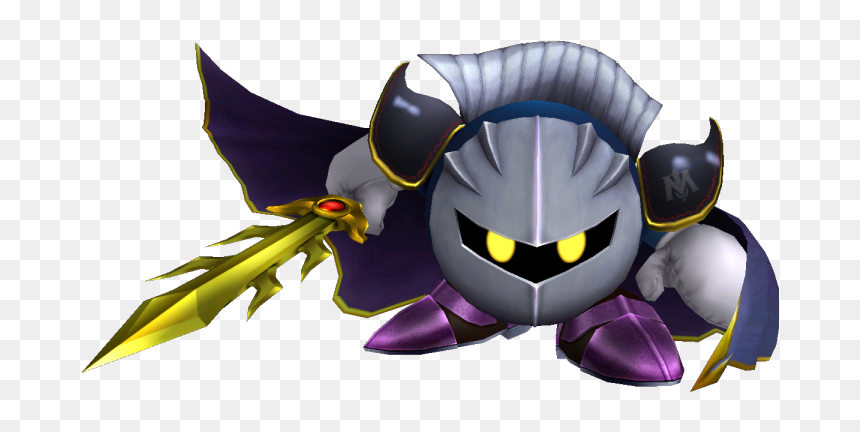
Brawl was announced as a title for the MLG 2010 pro circuit, and this kickstarted one of the most active and hype periods in Brawl’s competitive history. The rivalry between top players Mew2King and Ally had really hit its stride, and the pro circuit would be the breakout performances for some of the biggest Smash names today, including ESAM, mikeHAZE and Larry Lurr.
The first three tournaments of the Brawl pro circuit were a showcase in absolute dominance by Mew2King. He won all three tournaments without dropping a set, bringing in a total of $7,500 in prize money for singles alone. In addition to his 1v1 domination, he won all the doubles tournaments at these events as well.
Unfortunately, his dominant streak would come to an end; in more ways than one.
Bracket Manipulation At MLG DC 2010

One of the biggest stains on Brawl’s competitive image was at MLG DC, when Mew2King and ADHD were involved in an alleged bracket manipulation scandal.
Apparently, Mew2King asked ADHD before their set in loser’s finals if he wanted to split the pot. ADHD told him they would discuss it after the set, which ADHD ended up winning. ADHD would go on to win the tournament over Rich Brown, and he gave Mew2King $300 after the tournament.
While there was heated debate as to whether this was genuine bracket manipulation, MLG decided to ban ADHD and Mew2King from the final pro circuit event in Dallas. This decision drew heavy criticism from some in the Smash community.
The ban removed the dominant Mew2King and the top contender ADHD from the massive prize pool to be featured at MLG Dallas. As a result, the final pro circuit was much more wide open, and the eventual Brawl MLG champion would be someone no one expected.
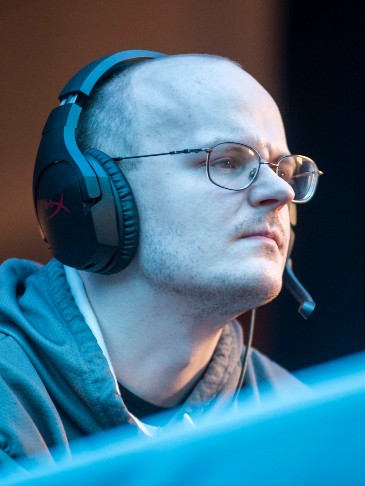
The winner of MLG Dallas, and person crowned the Brawl MLG champion, would be Gnes. Games had only attended one prior MLG event, and he was relatively unknown compared to players such as Ally, ESAM, and Tyrant. However, he was an incredibly skilled player and it all came together at MLG Dallas when he took home the largest ever paycheck for a Smash tournament, winning $12,750 (This wouldn’t be surpassed until Hungrybox won a larger check at the Battle of the Five Gods in 2017.)
Unfortunately, the bracket manipulation scandal, as well as the continuing struggles with Nintendo when it came to hosting their games on the pro circuit, meant that MLG dropped Brawl after the 2010 season. Another example of the difficulties MLG faced was that none of the games were allowed to be streamed/recorded; the only footage of Brawl MLG matches are hand-recorded.
While the MLG Brawl tournaments helped provide a spark to the competitive community, the drawbacks were too overwhelming to continuing having Brawl on the pro circuit.
It would be four years before MLG and Smash would associate with one another.
The Not-So Glorious Return
In the summer of 2014, MLG brought back Super Smash Bros. Melee for a one-off event at MLG Anaheim. It would feature singles, doubles and an East Coast vs. West Coast crew battle.
The leadup to MLG Anaheim involved a series of qualifiers; these were grassroots tournaments sponsored by MLG, and those earning enough qualifier points would be able to make it to the pro bracket at MLG Anaheim. The qualification system got a mixed reception, as it allowed players who weren’t at the top rankings, such as s0ft, ZeRo and Remen, to get in by simply attending enough qualifiers and placing decently enough.
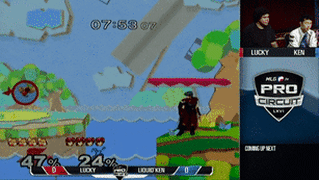
MLG Anaheim would feature all of the top talent of the new era, including Armada, Mango, Hungrybox, PPMD and Leffen. In fact, the only player from the old MLG era to make it to the championship bracket was Mew2King. The level of competition was among the highest the game had ever seen.
Unfortunately, the tournament was run extremely poorly, a stark difference from the earlier Melee MLG era. Matches were called at incorrect times, which led to players getting DQ’ed which were only reversed due to intense social media pressure. There were no friendlies allowed at the venue despite plenty of open setups. The stream wasn’t of the best quality, and there was a lot of advertisements and downtime between matches.
Perhaps the biggest blunder of MLG Anaheim was that none of the match recordings saved; the only videos from that event still available had to have been screen recorded by viewers, a practice that is highly discouraged by the very people who run streams.
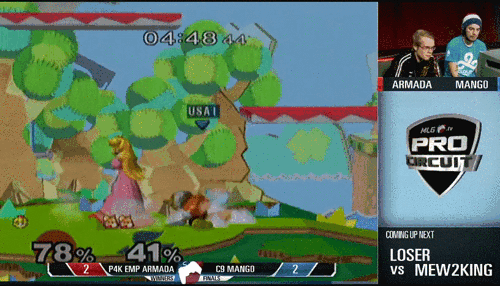
Despite an incredible finals between Mango and Armada, which Mango would go on to win, the event had a lukewarm reception, and the connection between MLG and Smash became weaker and weaker. As Smash continued to grow through grassroot efforts, the community became less romanticized by the idea of being included alongside MLG.
The Last Hurrah: MLG World 2015
The final time Smash would be featured at an MLG event was at the MLG World Finals 2015 tournament, hosted in New Orleans in October 2015. This event would feature both Smash 4 and Melee, although there was a limited number of top players in attendance for Melee due to the fact that the tournaments were only announced a month prior.
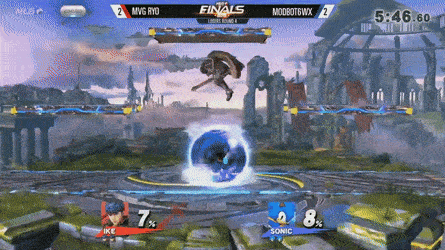
On the Melee side of things, Hungrybox secured another major tournament win and continued his strong streak over Mew2King. The Melee tournament was also the third time a Luigi player cracked Top 8 at a national Melee tournament, when Blea Gelo placed 7th overall.
The Smash 4 tournament, however, would go on to become one of the most important tournaments in the game’s history.
Heading into MLG World Finals, ZeRo had won a record-breaking 56 tournaments in a row. He had gone almost a year without losing a tournament, and had won notable events such as Apex 2015, CEO 2015, EVO 2015, and The Big House 5. In fact, he had only lost a handful of sets total during the year that Smash 4 was out.
ZeRo faced off against Nairo, the #2 ranked player in the world at the time, yet who just hadn’t been able to find a way to beat ZeRo. Coming from loser’s, Nairo did the impossible and took two sets off ZeRo to snap his winning streak and become the MLG 2015 Smash 4 champion.
MLG And Smash In The Future
It seems unlikely that Smash will be featured at MLG events in the future; with MLG being purchased by Activision Blizzard and pivoting the platform to focus more on streams and news coverage, that chapter in Smash history is very likely finished.

There were definitely some bumps in the road during MLG and Smash’s relationship, from the bracket manipulation to the poorly run events later on where it seemed like Smash outgrew the need for MLG.
But it’s important to recognize the impact and influence that MLG had on the Smash scene in the early days, and just how important it is in the story of the competitive scene. MLG gave Smash a very early taste of what esports could be like, and it gave its players a reason to work hard and be excited about their game.
For more on the history of MLG and Smash, be sure to check out The Smash Brothers documentary.


